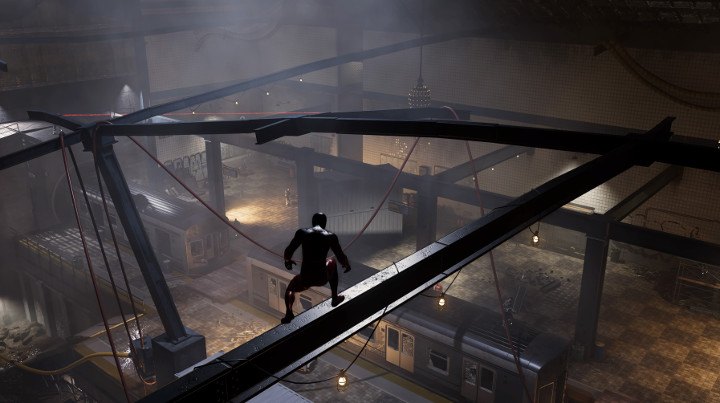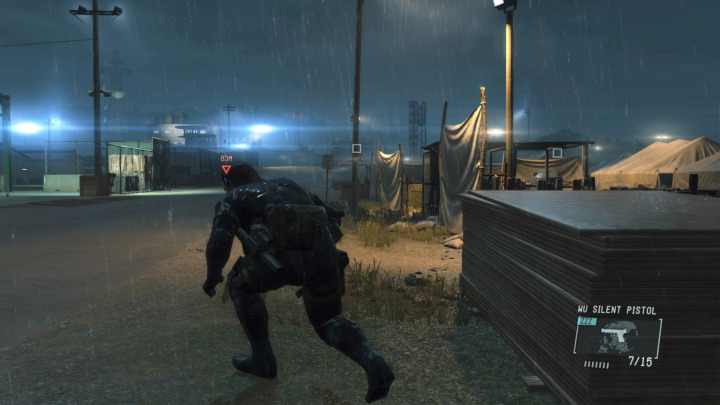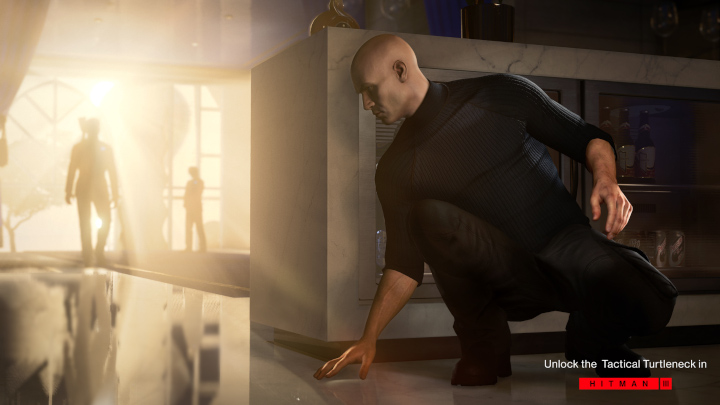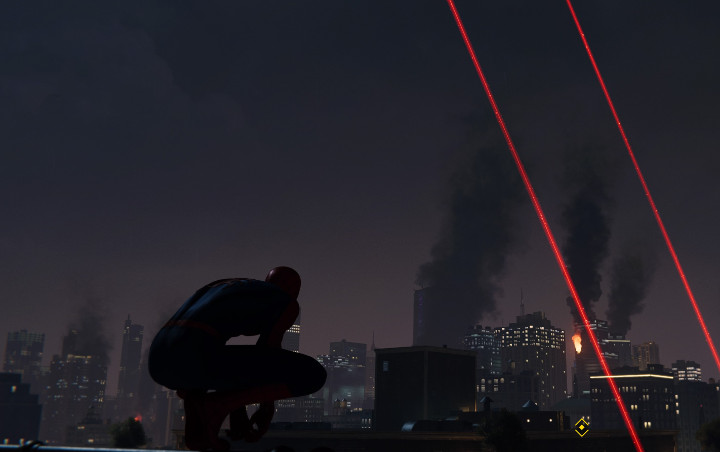
I spent a couple months in 2020 playing Marvel’s Spider-Man late at night, while struggling through bouts of insomnia (which is appropriate, considering the game was made by Insomniac Studios). It’s a fantastic game, but one thing I don’t see referenced a whole lot is the fact that it’s also an absolutely incredible stealth game.
In Marvel’s Spider-Man, you can perch atop ledges and steel beams, watching your victims go about their routines before swooping in with a web-swing, wrapping them up in webbing, and bonking them over the head so they’ll sleep for the next several minutes while you go about taking down the rest of their crew. It’s super fun.
And that got me thinking about what it is exactly that makes stealth gameplay satisfying.
Now, some folks will disparage stealth gameplay when it’s tossed into games where it doesn’t seem to belong. And I really can’t disagree with that sentiment. As great as Life Is Strange is, for example, there’s that one dream sequence toward the end of the game that’s almost physically painful to get through. Suddenly, the game — which is very much not a stealth game — introduces a stealth mechanic that it immediately discards once the dream sequence ends.
When you compare the stealth sections of Marvel’s Spider-Man with the Life Is Strange dream sequence (again, both games are wonderful), it becomes pretty clear why one works when the other doesn’t. In Spider-Man, the player is empowered via stealth; in Life Is Strange, the player is disempowered by it.
In Marvel’s Spider-Man, you’re given a lot of tools that aid you in your stealth shenanigans. You can distract enemies with webbing. You can take enemies out of the action and stick them in places they won’t be discovered by their peers. You can swing in, Tarzan-like, from a rope of webbing. You can even stick people to the wall with a well-aimed webshot. You feel like a complete badass.
In Life Is Strange, the dream sequence forces you to hide behind lockers while avoiding enemies with flashlights. There are emotionally charged phrases playing in the background, but they end up falling flat because this scene becomes such a frustrating nightmare. While each phrase might have emotional heft the first time, repeat playthroughs (which are forced when you mess up) take the grit out of them, making them more annoying than impactful.

I should be clear about this: Disempowering the player isn’t a bad thing in and of itself. I’ve actually lauded Red Dead Redemption 2 for some of its control choices, making horses feel like they have their own will and making weapons feel like clunky old machines instead of streamlined, modern ones. And while people complain about the horse controls in Shadow of the Colossus, I don’t think horses should feel like vehicles in video games; they should feel like independent creatures with their own will and fears and desires. In fact, in Shadow of the Colossus, this actually enhances the emotional impact of the later scenes in the game.
That said, player disempowerment is a powerful narrative tool that should be wielded with great responsibility.
Stealth mechanics are designed around forcing the player to slow down, to survey the environment, and to plan ahead. When things go awry in a stealth game (as they so often do), the player is then forced to improvise. For this to be satisfying, the player needs to have options. And for the player to have enough options to cover all of these possibilities, they need a robust toolkit. Otherwise, the player quickly smacks into the edges of the sandbox, so to speak.
Spider-Man has a robust toolkit, which I’ve already described above. In Metal Gear Solid V (both Ground Zeroes and Phantom Pain), Snake has a ridiculous amount of options in any given scenario. From cardboard boxes (which can be used to hide inside, or as sleds) to silent nonlethal takedowns, to a veritable arsenal of high-tech weaponry, you always have options when things go awry.

And look at the Hitman series. You’ve got disguises galore. You’ve got silenced weapons. You’ve got fake keycards and skeleton keys and poisons and garroting wires and slippery banana peels and vomit-inducing gas clouds. What makes the Hitman games so fun is that you can creatively problem solve your mission objectives with a massive (and oftentimes wacky) selection of tools.
Yes, in Metal Gear Solid and Hitman, you are disempowered to some extent (in that the difficulty quickly escalates when you get spotted), but that disempowerment is balanced with a robust set of tools. So you’re not playing with your hands tied behind your back; you’re just forced to play in a different way than the guns-blazing approach. And in Marvel’s Spider-Man, you can take either option; the stealth route is just way more satisfying than the guns-blazing approach because combat can quickly devolve into a button-mashy slugfest (which isn’t to say combat isn’t fun; it’s just a more straightforward approach than sneaking around and creatively using your environment to stay hidden for as long as possible).
A stealth game is only ever as good as its toolkit is versatile, and this is why games not specifically designed around stealth mechanics will always fall flat when they try to implement stealth sequences. Stealth isn’t fun on its own. Stealth when accompanied by gadgets and creative-style gameplay is an absolute blast.

As a player of stealth games, I’m okay with a little disempowerment — being spotted should cause an escalation in difficulty — but I also need that disempowerment to be offset by a robust toolkit. Stealth games are at their best when the player is given options and is allowed to let their creativity run amok. Without that element, stealth game sections will almost always be tedious and frustrating.